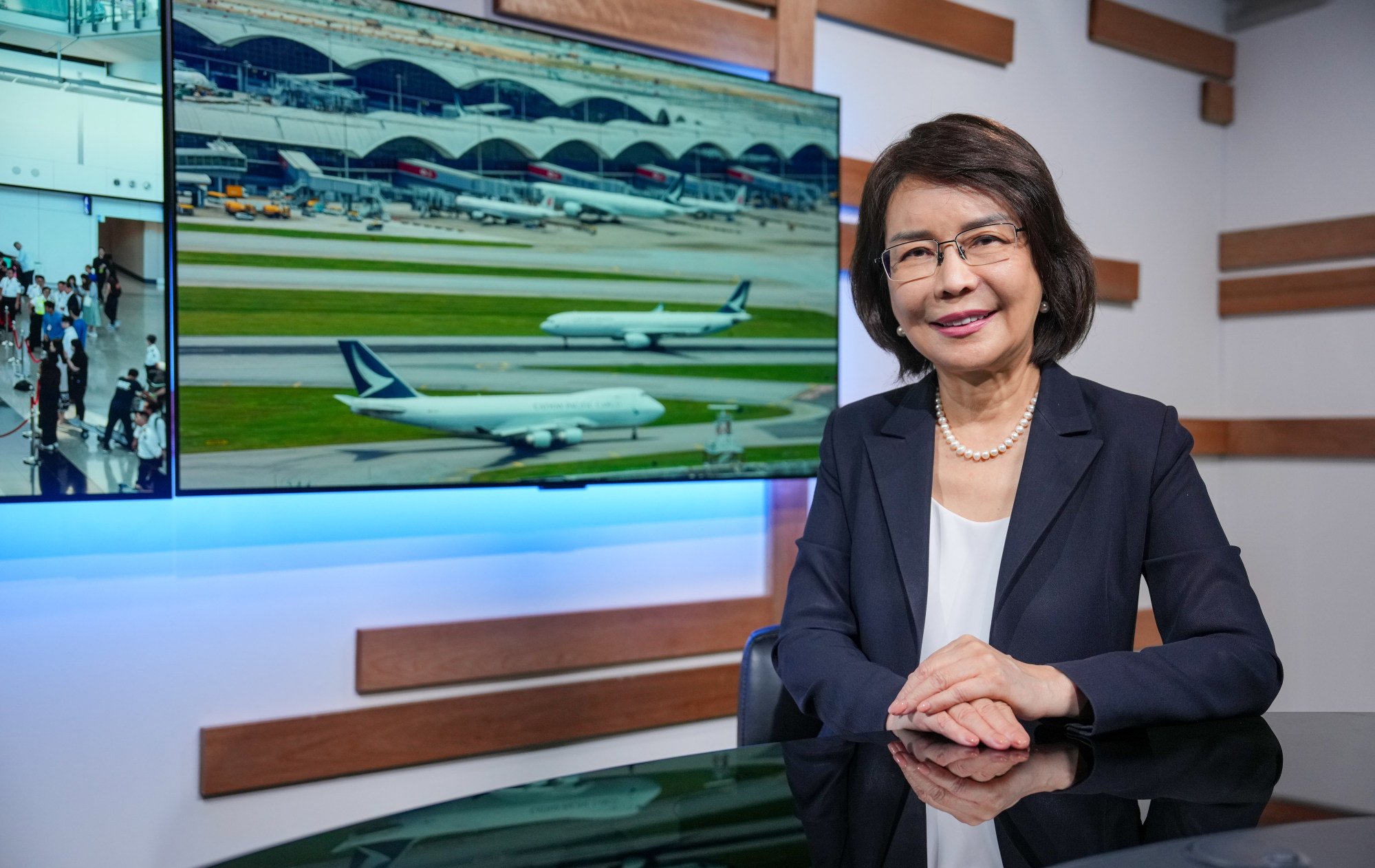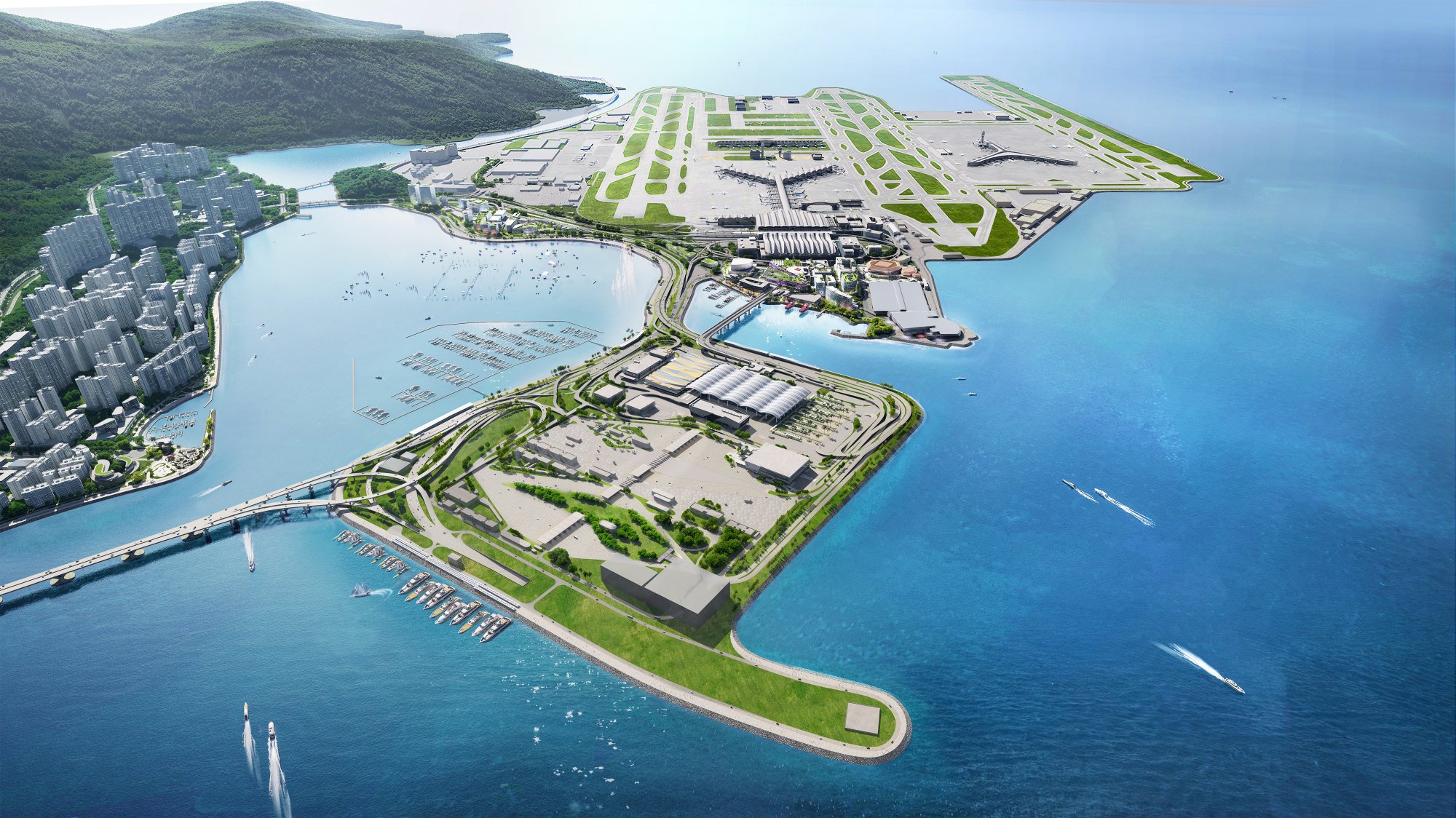
Hong Kong’s Airport Authority is moving ahead with the next phase of a HK$100 billion (US$12.8 billion) infrastructure expansion to turn the city’s airport into a “landmark” destination as it fuels itself with a “sense of crisis” to beat the competition, its acting CEO has said.
In an exclusive interview with the Post ahead of this Thursday’s launch of the three-runway system, Vivian Cheung Kar-fay said the Airport City project was created not only to boost Hong Kong’s competitiveness within the Greater Bay Area, but also to develop airport facilities to enhance the city’s cultural relevance.
“We need to have a sense of crisis. We all should, as operators, especially with this ever-changing political and economic environment and the mainland growing so fast, not just in the airport [sector], but in every aspect,” Cheung said, citing “peer airports” in the bay area such as Zhuhai, Shenzhen and Guangzhou.
Do you have questions about the biggest topics and trends from around the world? Get the answers with SCMP Knowledge, our new platform of curated content with explainers, FAQs, analyses and infographics brought to you by our award-winning team.
“I won’t say that it worries me. But I have to be alert. I have to not just be alert but take action to make sure that we are not going to fall behind. So we study and monitor our peer airports.
“But right now I have to proudly say that, in fact, our peer airports so far are still using us as a benchmark for what they want to be.”
The bay area is a national plan to develop Hong Kong, Macau and nine cities in Guangdong province into an economic powerhouse, with a collective population of about 87 million.
Airport City’s ambitious plans align with recent calls by Beijing’s point man on Hong Kong affairs, Xia Baolong, to position Hong Kong as a global hub for sea, land and air with the private sector playing a bigger role in driving future growth.
The project was initiated in 2019 and is scheduled to be completed by 2031. It will expand the Hong Kong International Airport’s functions and capacity by adding a purpose-built, large-scale facility for storing artwork, a 600-berth yacht club, a “Jet Fresh Market” to rival Tokyo’s Tsukiji Fish Market and a development called Skycity for a hotel, offices and commercial use.

“We want to create [Airport City] to become an attraction, to draw more investors and visitors to Hong Kong and therefore enhance us to become an even more powerful economic engine,” Cheung said.
“Hong Kong, for long enough, hasn’t created any notable products for tourism or for general attractions, and we want to contribute to that. We want to also show our ability as well, not only build this to become a most important hub, but also [into] a very important landmark itself.”
The Airport City development will be completed in stages, with the new HK$141.5 billion three-runway system launching on Thursday.
Cheung said the authority’s ambition was also to catapult Hong Kong to become “the world’s No 1 art hub”, noting that the city ranked second after New York, the world’s biggest trading centre for artwork.
“Even with the lack of this [new] facility, we’re already No 2. We can be No 1,” she said.
“We should help Hong Kong to have that ambition to be No 1. And we are not that far, just with a little bit more investment and a little bit effort.”
A recent study by Art Basel and UBS showed the US had the biggest market share in global art trading, with 35 per cent of the world’s imports and 32 per cent of exports of arts and antiques last year. Hong Kong’s share was 18 per cent and 19 per cent respectively.
In terms of funding for Airport City, Cheung said the authority would take up 30 per cent of the HK$100 billion cost, with the rest coming from private investors. The authority earlier revealed its intention to raise HK$10 billion by issuing bonds.

Asked what she thought of critics’ views that Hong Kong had been slow in developing its airport’s competitiveness in the region, Cheung said she disagreed with those criticisms, adding that the Airport City development would be “one of a kind” and have elements that leveraged on the city’s unique strengths.
“Hong Kong is a free port, with low tax and internationalisation, people are very proficient with different languages,” she said.
She also emphasised the airport’s efficiency and high daily capacity for transporting fresh produce and seafood.
Hong Kong already had a large demand, she noted, adding: “And with our hub [having] such a high frequency [of flights] to ... Japan or nearby Southeast Asian places, we can definitely get the best seafood.”
She said she was confident the remaining phases of the development were on track, underlined by the authority’s record of opening the three-runway system as scheduled and within budget.
Cheung was among the business leaders who met Hong Kong and Macau Affairs Office Director Xia Baolong at a recent symposium in Shenzhen, a meeting she called encouraging.
“He’s sending a very important message to Hong Kong that we do have some very valuable assets, and we need to know how to best utilise [them],” Cheung said.
“Now, we represent the one part, which is [the] airport, and we are exactly doing so that we are not just treating it like an airport.”
More from South China Morning Post:
- Hong Kong should open up new routes, not worry about airport overcapacity: industry experts
- Hong Kong to raise HK$10 billion through bonds for ‘landmark’ Airport City project
For the latest news from the South China Morning Post download our mobile app. Copyright 2024.








































